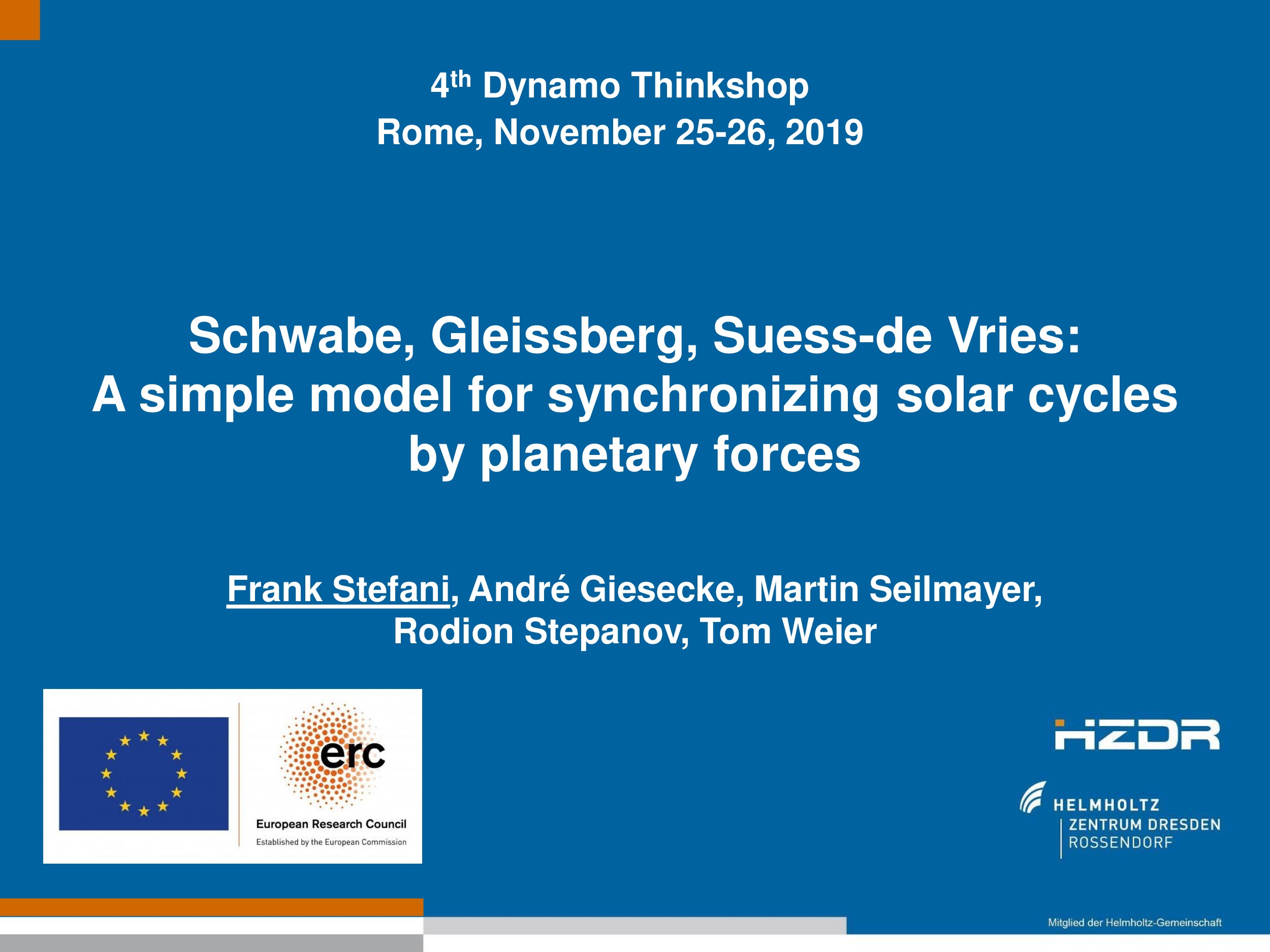Schwabe, Gleissberg, Suess de Vries: A simple model for synchronizing solar cycles by planetary forces
Affiliation
Helmholtz-Zentrum Dresden-Rossendorf
Main category
Natural Sciences (Physics)
Abstract
Aiming at a consistent planetary synchronization model of both short-term and long-term solar cycles, we start with an analysis of Schove's historical data of cycle maxima. Their deviations (residuals) from the average cycle duration of 11.07 years show a high degree of regularity, comprising a dominant 200-year period (Suess-de Vries cycle), and a few periods around 100 years (Gleissberg cycle). Encouraged by their robustness, we support previous forecasts of an upcoming grand minimum in the 21st century. To explain the long-term cycles, we enhance our tidally synchronized solar dynamo model by a modulation of the field storage capacity of the tachocline with the orbital angular momentum of the Sun, which is dominated by the 19.86-year periodicity of the Jupiter-Saturn synodes. This modulation of the 22.14 years Hale cycle leads to a 193-year beat period of dynamo activity which is indeed close to the Suess-de Vries cycle. For stronger dynamo modulation, the model produces additional peaks at typical Gleissberg frequencies, which seem to be explainable by the non-linearities of the basic beat process, leading to a bi-modality of the Schwabe cycle. However, a complementary role of beat periods between the Schwabe cycle and the Jupiter-Uranus/Neptune synodic cycles cannot be completely excluded.
Further reading
https://arxiv.org/abs/1910.10383
https://arxiv.org/abs/1803.08692
Do you have problems viewing the pdf-file? Download presentation
here
If the presentation contains inappropriate content, please
report the presentation. You will be redirected to the landing page.
